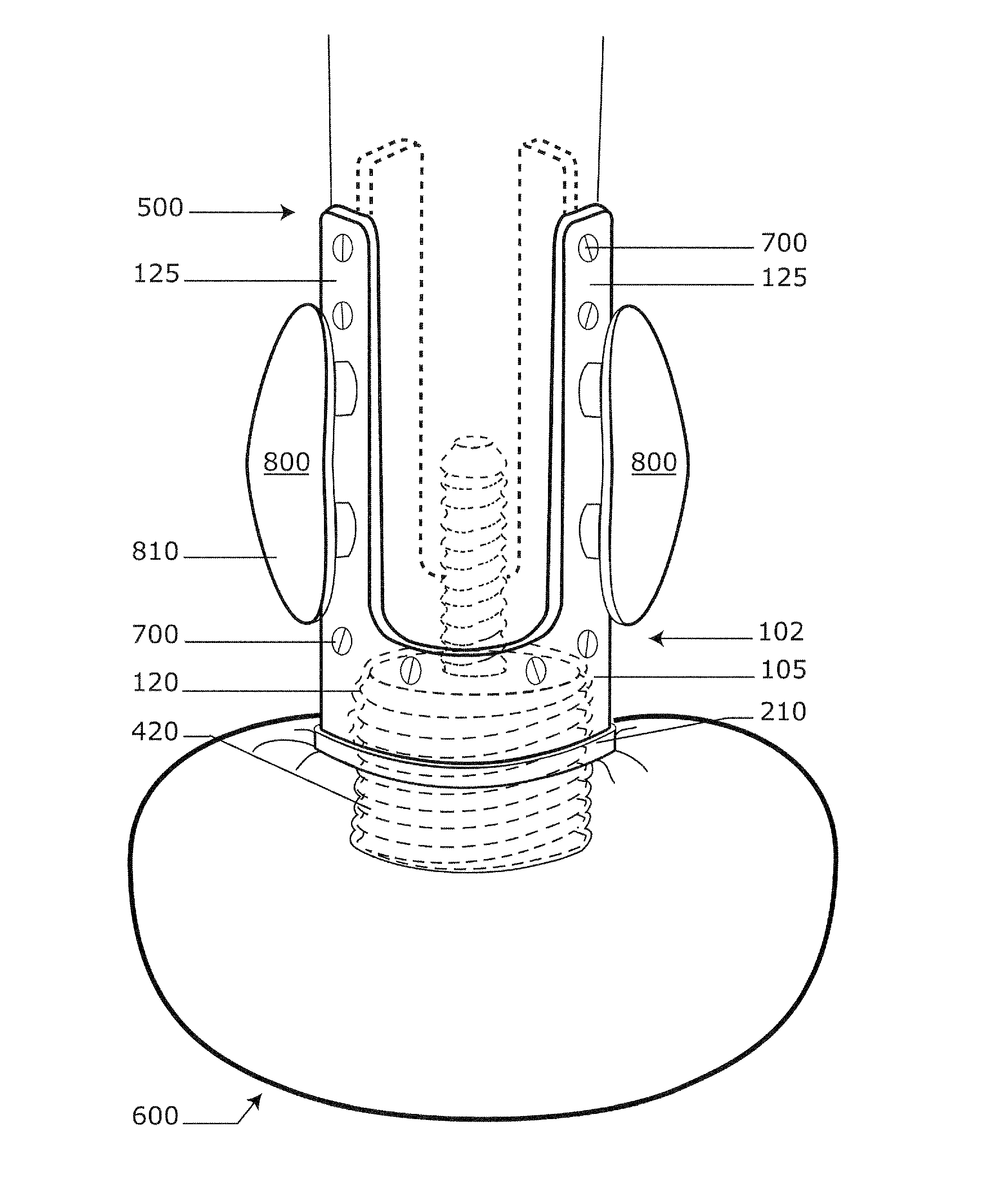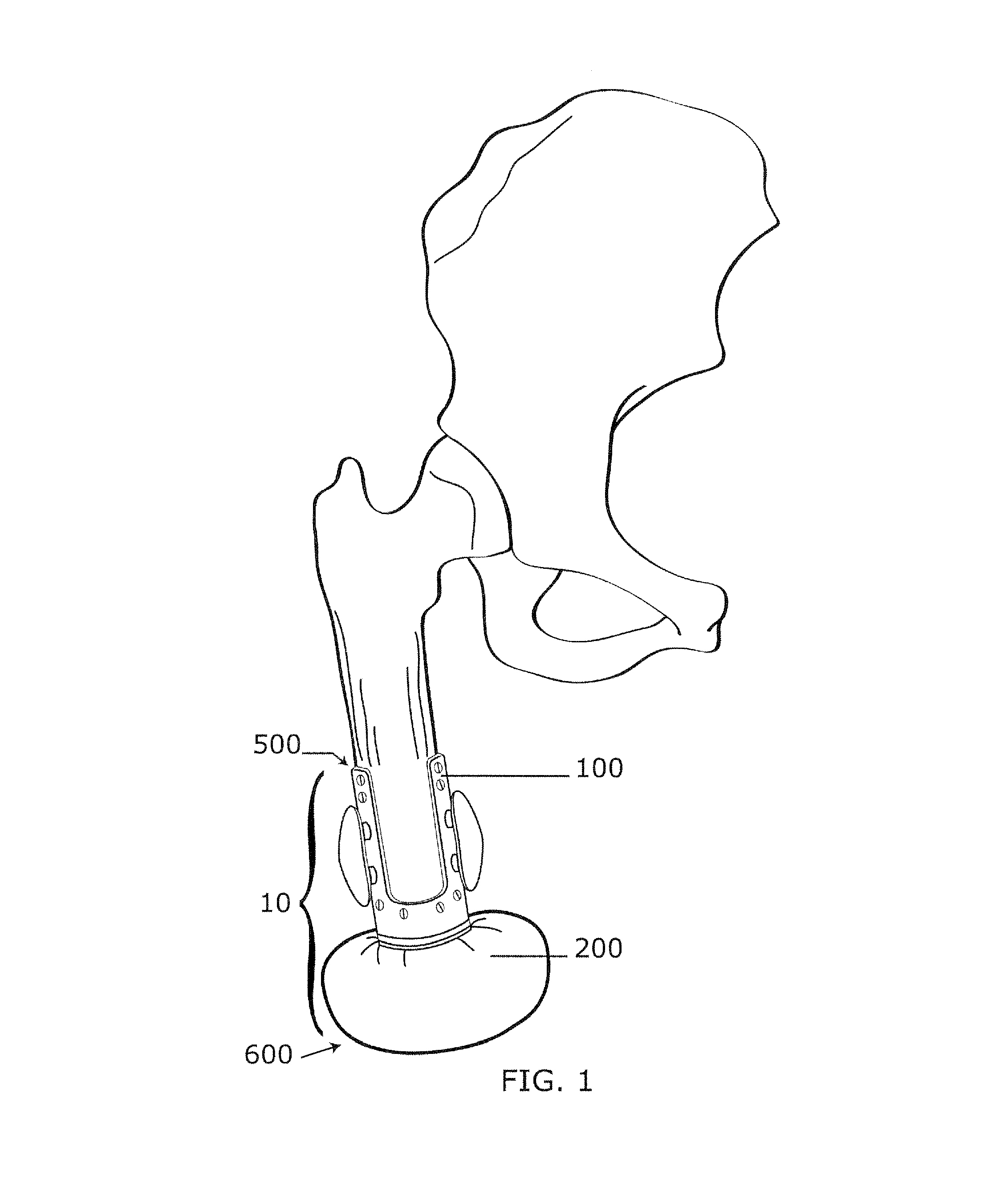Implantable Prosthetic Device For Distribution Of Weight On Amputated Limb And Method Of Use With An External Prosthetic Device
a prosthetic device and amputated limb technology, applied in the field of implantable prosthetic devices, can solve the problems of 25 percent of patients experiencing ulceration of the stump, use of the prosthesis, and complicated transition to use, and achieve the effects of improving the dynamic interaction, high effectiveness, and more functionality
- Summary
- Abstract
- Description
- Claims
- Application Information
AI Technical Summary
Benefits of technology
Problems solved by technology
Method used
Image
Examples
Embodiment Construction
[0047]The subject invention in general pertains to methods and devices for providing an amputee with a prosthetic limb system for comfortable, long-term ambulation. More specifically, the subject invention pertains to one or more embodiment(s) of an implantable prosthetic component, a surgical technique for preparing the residual limb and an external prosthetic limb that works with the implantable component.
[0048]The following description will disclose that the embodiments of the subject invention are particularly useful in the field of lower extremity amputations, in particular to devices used to provide ambulation to an amputee and methods for preparing a residual limb to receive an external prosthesis. However, a person with skill in the art will be able to recognize numerous other uses that would be applicable to the devices and methods of the subject invention. While the subject application describes a use with residual leg limbs, other modifications and uses that would be appa...
PUM
 Login to View More
Login to View More Abstract
Description
Claims
Application Information
 Login to View More
Login to View More - R&D
- Intellectual Property
- Life Sciences
- Materials
- Tech Scout
- Unparalleled Data Quality
- Higher Quality Content
- 60% Fewer Hallucinations
Browse by: Latest US Patents, China's latest patents, Technical Efficacy Thesaurus, Application Domain, Technology Topic, Popular Technical Reports.
© 2025 PatSnap. All rights reserved.Legal|Privacy policy|Modern Slavery Act Transparency Statement|Sitemap|About US| Contact US: help@patsnap.com



